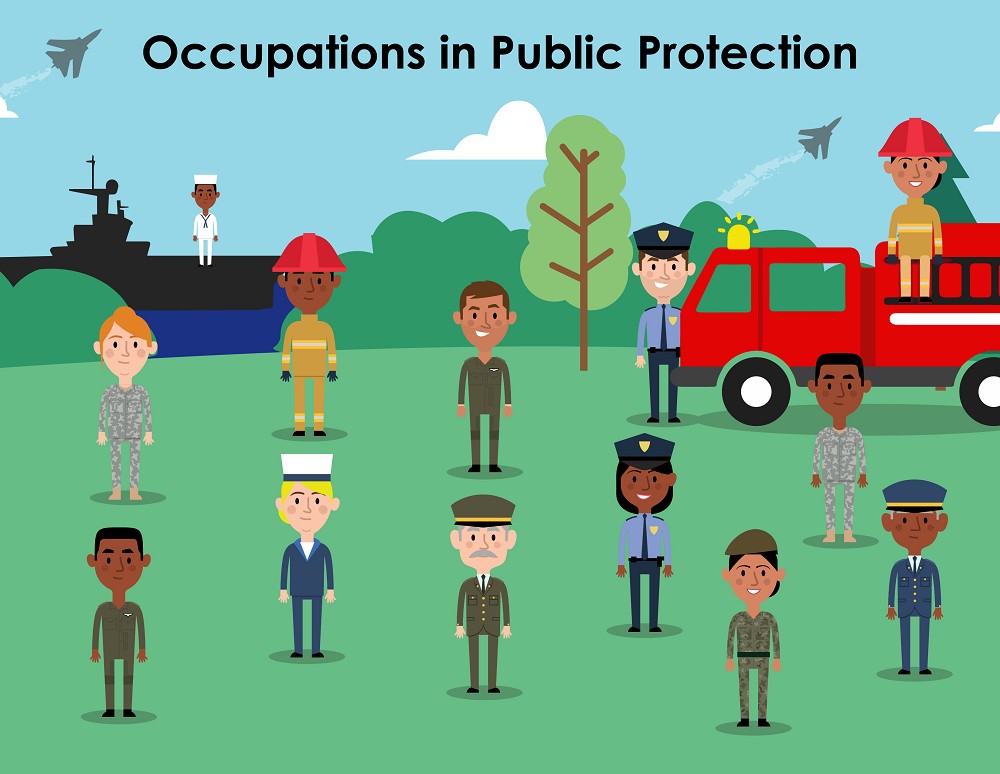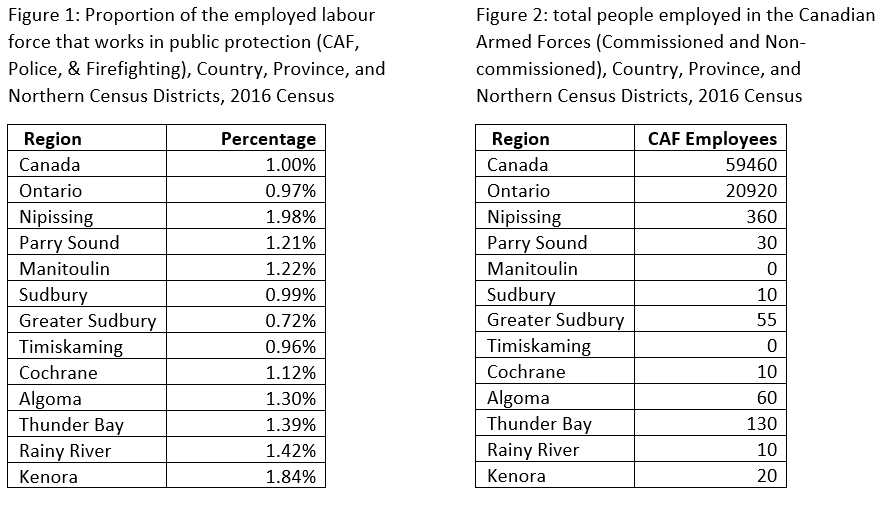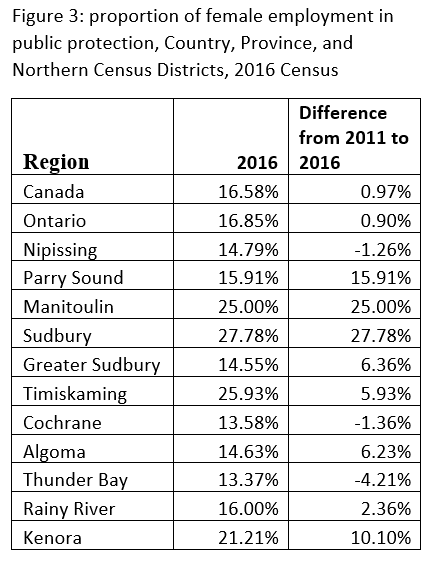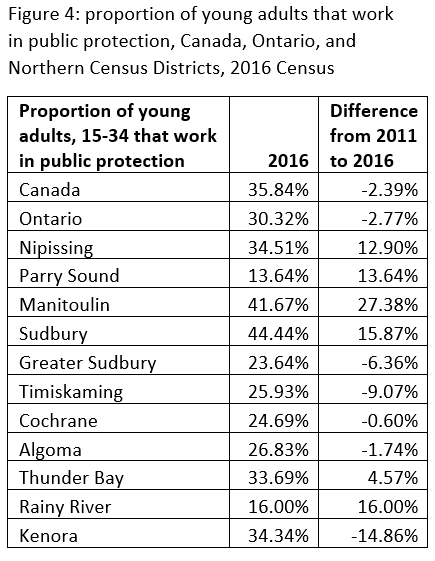Occupations in Public Protection
*Ceci est seulement disponible en anglais
March 24, 2020 - This blog first appeared in The Walleye Magazine, November issue

For this month’s issue of the Walleye, NPI examined the proportion of the employed labour force that work in public protection occupations, with a particular focus on employment in the Canadian Armed Forces (CAF). Public protection in general includes managers: commissioned CAF officers, Commissioned police officers, fire chiefs and senior firefighting officials, as well as officers in front-line public protection: non-commissioned CAF, police officers, and firefighters.
First, we examined the proportion of those employed in public protection services across Northern Ontario’s census divisions. We find that in 2016, Nipissing, Thunder Bay, Rainy River and Kenora have the highest proportion of people employed in public protection. At the same time, Nipissing and Thunder Bay districts also have the highest number of people in Northern Ontario employed in the CAF, followed by Algoma and Greater Sudbury.

Further, when examining the percentage of those employed in public protection that are women, we note that there is a higher proportion of females in this field in four Northern census districts (Manitoulin, Sudbury, Timiskaming, and Kenora), when compared to provincial and national proportions. We note that Thunder Bay’s proportion of women that work in public protection is lower than that of the province and the country, and has decreased by 4% since 2011. Figure 3 outlines both the 2016 proportions, and the difference in proportion from 2011 to 2016.

Finally, NPI examined the proportion of those who work in public protection in Northern Ontario that are considered young adults. We note that Thunder Bay, Kenora, Nipissing, Sudbury and Manitoulin districts all have a higher proportion of young adults aged 15-34 that work in public protection, when compared to provincial levels. This proportion has increased for many northern districts significantly since 2011.

The above figures examine the proportion females and young adults that work in public protection. However, we examine the proportion of females that work specifically with the Canadian Armed Forces in Northern Ontario, the results are different. Both Nipissing and Greater Sudbury districts have a higher proportion of females that work for the CAF than provincial and national averages. Also, when examining the proportion of young people employed in the Canadian Armed Forces in Northern Ontario, NPI found that Thunder Bay has one of the highest proportions of young CAF employees out of all census districts. in Thunder Bay, 73% of the total employed CAF workforce is between the ages of 15-34, which is higher than the provincial and national average at 44% and 49%, respectively.
*regions with lower population are typically more susceptible to statistical fluctuations – data should be used with caution.
Écrivez pour nous
Alex Ross is a former senior data analyst for NPI.
Le contenu du Puces Politiques du Nord est pour l’information et l’utilisation générales. Les vues exprimées dans ce blogue sont celles de l’auteur et ne reflètent pas nécessairement les opinions de l’Institut des politiques du Nord, de son conseil d’administration ou de ses partisans. Chaque auteur assume toute la responsabilité quant à la précision et à l’intégralité de son blogue. L’Institut des politiques du Nord ne sera pas tenu responsable d’une erreur ou d’une omission dans cette information, ni d’un dommage causé par l’exposition ou l’utilisation de cette information. Tout lien vers un autre site Web ne signifie pas que l’Institut des politiques du Nord est d’accord avec le contenu de ce site, ni qu’il y assume une responsabilité.
L’Institut des politiques du Nord vous invite à lui faire part de vos observations et commentaires. Cette rétroaction ne doit pas dépasser 500 mots. Nous ne publierons aucun commentaire comportant des propos obscènes, désobligeants, haineux ou menaçants. Évitez le hors sujet en vous assurant que vos commentaires concernent les thèmes abordés dans ce blogue. Si vous présentez une réfutation ou un contre-argument, veuillez fournir des sources et des éléments de preuve. L’Institut des politiques du Nord se réserve le droit de refuser les rétroactions et commentaires transmis à www.northernpolicy.ca qui contreviennent aux présentes directives.
